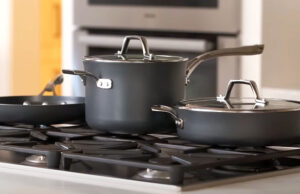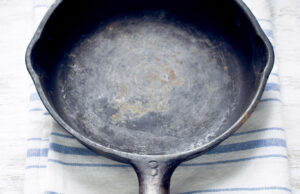Using the proof setting on your KitchenAid oven can help you achieve the perfect dough for bread and other baked goods. But if you’re new to this feature, you might be wondering what exactly it is and how to use it properly. Don’t worry, I’ve got you covered! This easy-to-understand guide will show you everything you need to know about the proof setting, including how to use it and when it’s best to use it. Let’s dive in and make your baking experience even more enjoyable.
What Is the Proof Setting on a KitchenAid Oven?
The proof setting on a KitchenAid oven is a special feature that helps you create the perfect environment for yeast-based doughs to rise. It’s designed to maintain a warm and steady temperature, which is ideal for activating the yeast in your dough. When yeast is proofed properly, it helps your dough rise and become light and airy, giving you the best texture for bread, rolls, and other baked goods.
Unlike a regular oven, which can get too hot for yeast to rise effectively, the proof setting keeps the temperature low and controlled. This makes it perfect for sensitive tasks like proofing dough without worrying about it overheating or not rising enough.
How Does the Proof Setting Work?
When you use the proof setting on your KitchenAid oven, the temperature is usually set between 85°F and 100°F (29°C to 38°C). This is the perfect temperature range for yeast to activate without causing any issues. If you’re familiar with baking, you know that yeast needs warmth to work its magic. Too much heat can kill the yeast, while too little heat can prevent the dough from rising properly.
By setting your oven to the proof mode, it will maintain a constant warm environment that encourages the yeast to grow. As a result, your dough will rise faster and more evenly, giving you better results when it’s time to bake.
How to Use the Proof Setting on Your KitchenAid Oven
Now that you know what the proof setting is, let’s go over how to use it correctly on your KitchenAid oven. Don’t worry, it’s really simple! I’ll walk you through all the steps to ensure your dough rises beautifully every time.
Step 1: Prepare Your Dough
Before you start using the proof setting, you need to prepare your dough. Mix your flour, yeast, water, salt, and any other ingredients according to your recipe. Make sure your dough is well-kneaded and ready for the proofing process. Some recipes may require you to let the dough rest briefly before proofing, so be sure to follow your recipe instructions carefully.
Once your dough is ready, you can move on to setting up your oven.
Step 2: Turn on Your KitchenAid Oven and Select the Proof Setting
The next step is to turn on your KitchenAid oven. If your oven model has a touch screen, simply press the “Proof” button. If you have an older model with a knob, turn the temperature dial to the proof setting, which should be marked clearly on the oven’s control panel.
Once the proof setting is activated, the oven will automatically adjust the temperature to the ideal range for proofing dough. This will create the perfect warm environment for your yeast to activate and make your dough rise.
Step 3: Place Your Dough in the Oven
Now that your oven is preheated and set to the proof setting, it’s time to place your dough in the oven. You can use a greased bowl or a baking dish, depending on the size and shape of your dough. Cover the bowl or dish with a damp cloth or plastic wrap to help retain moisture while your dough rises.
Make sure the dough is centered in the oven to allow for even heat distribution. If you’re proofing multiple batches of dough, you may need to rotate the pans halfway through the proofing process to ensure uniform rising.
Step 4: Monitor the Dough
Although the proof setting provides a stable environment for rising, you should still keep an eye on your dough to make sure it’s progressing as expected. Depending on the recipe and the amount of dough, proofing time can range from 30 minutes to 2 hours.
Check the dough every so often to see if it has doubled in size. Once it has, you can remove it from the oven. At this point, your dough is ready for the next steps, whether it’s shaping, baking, or anything else your recipe requires.
Step 5: Finish Your Recipe
After your dough has risen, it’s time to move on to the next stage of your recipe. This could be shaping the dough into loaves or rolls, adding toppings, or even baking it. At this point, your dough should be light and airy, giving you the best results when baked.
If your recipe requires a second proofing, you can repeat the process by putting your dough back into the oven for a final rise.
Tips for Using the Proof Setting on Your KitchenAid Oven
To make the most out of the proof setting on your KitchenAid oven, here are some useful tips:
- Always follow your recipe instructions carefully to ensure your dough rises properly.
- Make sure your oven is clean and free from any leftover food or spills before you use the proof setting.
- Don’t open the oven door too often while proofing. This can let warm air escape and interfere with the rising process.
- If you live in a colder environment, you might want to preheat the oven for a few minutes before using the proof setting to ensure it’s warm enough.
- Some KitchenAid oven models come with a built-in light feature that helps maintain warmth. If your model doesn’t have this, you can always try using a small oven-safe dish of water to help create moisture and maintain heat.
I hope this article helped you understand how to use the proof setting on your KitchenAid oven! By following these steps and tips, you’ll be able to make perfect dough every time. Happy baking!
Frequently Asked Questions
Is it okay to proof dough in the oven without the proof setting?
Yes, it’s possible to proof dough in your oven without using the proof setting. You can use the regular oven temperature or create a warm environment by placing a bowl of hot water inside. However, the proof setting makes it easier and more controlled.
Can I use the proof setting for all types of dough?
Yes, you can use the proof setting for most yeast-based doughs. This includes bread, rolls, pizza dough, and sweet doughs. Just be sure to follow your recipe instructions.
Do I need to preheat the oven before using the proof setting?
It’s usually not necessary to preheat the oven before using the proof setting. The oven will heat to the ideal temperature on its own once you select the proof option.
Is the proof setting the same as the warm setting?
No, the proof setting is different from the warm setting. The proof setting maintains a consistent low temperature perfect for rising dough, while the warm setting is designed for keeping food at a low temperature after cooking.
Can I proof dough in my KitchenAid oven if I don’t have the proof setting?
If your oven doesn’t have a proof setting, you can still proof your dough using the regular oven settings. Just keep the temperature low and monitor your dough closely to make sure it doesn’t get too hot.
Is it safe to leave dough in the oven for a long time?
While it’s fine to let dough rise for an extended period, you don’t want to leave it in the oven for too long. If dough rises for too long, it can become over-proofed and lose its structure. Follow your recipe’s recommended proofing time.
Can I proof multiple batches of dough at the same time?
Yes, you can proof multiple batches of dough at once. Just make sure there’s enough space in the oven for each batch to rise properly, and rotate them if necessary for even heat distribution.
Do I need to cover my dough while proofing?
Yes, it’s a good idea to cover your dough with a damp cloth or plastic wrap to prevent it from drying out while it rises in the oven. This helps maintain the right moisture levels for the yeast to work effectively.



